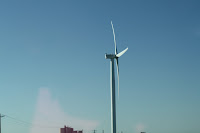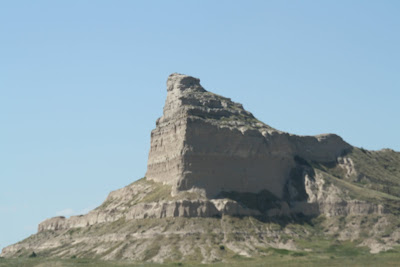Madiera Beach Boat Parade and Party
Florida’s Christmas celebrations are soooo different than those in northern climes. Many towns have street parades, oft at night. But many of the coastal or bay front towns have an additional parade…a parade of boats from tiny dinghies to mammoth yachts highly decorated with lights, dancing Santas (some in red shorts, Hawaiian shirt and surf board--hohoho), trees--some dancing, more lights and an assortment of “red-nosed” animals. Yes, of course, we have Rudolph the Red-nosed reindeer. But then, there are the red-nosed turtles, flamingoes, dolphins and various and sundry other lesser known red-nosed creatures. I am sure they all must have names, but I will leave it to the reader’s imagination to name these critters. I personally like the alliteration found in Rudolph, the Red-Nosed Reindeer. Can’t get that alliterative sound with these other animals.
One of our favorite annual traditions at this time of the year is the party at Rick’s. Rick is a really great guy with a big heart and lots of hospitality. His home is on the beautiful Boca Ciega Bay (a smaller bay just north of Tampa Bay). Originally, the waterfront was surrounded by small cottage-type houses, many framed or block. Because it is on the water’s edge, much of the area has been bought by folks who tore down the old charming bungalows and built huge multi-story houses. There are several surrounded Rick’s place. His place, however, is still a block bungalow built over the course of a couple or three decades…remnants of earlier architecture.
We arrived early enough to watch dophins playing in the beautiful bay.
We arrived early enough to watch dophins playing in the beautiful bay.
Rick has a philosophy about the color of his house. Go to the paint store, buy whatever has been returned by someone else. And paint the wall that color. If one gallon is not enough, buy as many gallons as one might need to complete a wall. If the colors are not the same…no problem…just mix them all together..and paint the wall that color. Thus, the exterior of his home has one wall facing the bay (the east wall) that is sort of pinkish. One wall is greenish (I think that is the north wall). Since there are a couple of ells, the walls switch color. The west wall which faces the road is various shades of blue. This wall is painted in a wavy shore motif.
The interior walls have the same criteria. Buy whatever, mix it, paint with it. One bathroom is kind of an apple red on the walls, plum ceiling and a turquoise shag rug. One of his many friends actually found a curtain with those exact colors and ties the room together.
Rick is the bass player in the 97th String Band--we like to believe world famous--a group that plays music from the ‘60’s—that is the 1860’s. There music is music that would have been heard during the Civil War. Great music!
Anyway, back to the annual tradition. Rick opens his house and heart on the waterfront on the day of the boat parade scheduled for the town of Madiera Beach.
He provides soda, ice and some beer. A few years ago, all these items were put in his canoe which was near the house. The canoe has since been retired. He now uses real coolers.
Anyone/everyone is welcome…neighbors, students (he is a retired teachers), other teachers, railroad enthusiasts (he likes trains), friends, friends of friends, and friends of friends’ friends and probably their friends. Of course, any Civil War reenactor who is inclined to attend is welcome. This group forms the largest part of the population. Often there are people floating through his house and yard that he does not really know. It is a great family event. Children of all ages are welcomed (as long as their parents, uncles or grandparents watch over them).
He never worries about food, as he provides none of it. The criterion for this party is to bring something…anything from store-boughten chicken to home made chili. Greek salad, the most amazing meatloaf (made with spinach, bacon, cheese, tomato sauce), store-bought sweets, home made cookies and cake, appetizers—including dips, crackers, chips, hummus. Some years lots of pasta dishes show up (none this year),
Although the boat parade arrives in front of his dock somewhere between 7:15 and 8:00 pm, people start arriving about five-ish. There is a constant revolving of goodies on the table. Those who arrive early eat early, then eat later, then eat later as new foods replace early taste treats.
Everyone who wants or needs a chair brings his/her own. There is some liquor, but no one every seems to get drunk. This year Deb had a burner going heating hot cider. There was spiced rum for those who wanted it “leaded.” The bottle was not gone at the end of the evening, although the hot cider was.
Several guests are musicians. Flutes, penny whistles, guitars, (sometimes) Rick’s bass, brogans, and various other small instruments abound. Singing of traditional Christmas songs for anyone who wants to join in.
Those of us who are veterans of this celebration know that the more noise, the better. Whistles. Air Horns. Cow Bells (this is my contribution), Yelling and Hooting. Whatever can make noise—the louder, the better. And, of course, Ray and his half –scale Civil War cannon! BOOOOM! BANG! BOOOOOOOOOOOM!
As each boat goes by with their beautiful decorations, the crowd gets nosier. One year as Ray shot the cannon (black powder, but no ball or shell) one of the participants on the boat going by actually ducked (probably this has happened more than once). Ray shoots as many rounds as he can get out of his cannon. He even shoots at the Sheriff’s boats (try that one in Massachusetts!).
Most years there are thirty or forty boats—some commercial, some privately owned. One boat that always had dropped anchor opposite Rick’s dock is the local party. This is one of those huge paddle boats that one sees at places like the Mississippi River. (I think, that although there are many parties happening in the neighborhood, ours is the loudest; and, no doubt the most fun). But, apparently, the economy or perhaps the poor weather forecast changed the face of the parade. The party boat did not show. And the number of boats in the parade was definitely scaled back.
This did not in any way curve our enthusiasm.
The boats pass north to south and then some of them pass by one more time as they are docked north of Rick’s.
After the last boat re-passes us, the traditional aerobic “Twelve Days of Christmas” is rendered. All are invited into the “circle” to enjoy this bit of crazy fun. There are always some who do not want to look like fools and stand off in the corner, but it is their loss. Thirty or forty people singing (mostly off key) and jumping and flailing to the song is something to behold. The early part of the song is fairly easy, but when we get into the higher numbers, not everyone is doing the same thing. Some are doing the twelve drummers drumming while others have gotten down to lords a-leaping. A beautiful mish-mosh of great fun and laughter. Kids. Adults. Slim and trim folks. Some of us who are more portly. Usually, by the time we finish our sides hurt from the laughter generated.
The party tends to break up around nine o’clock or so. No one ever goes away unhappy. Rick is a most unlikely party host. But, in the long haul, his style is great!


























































